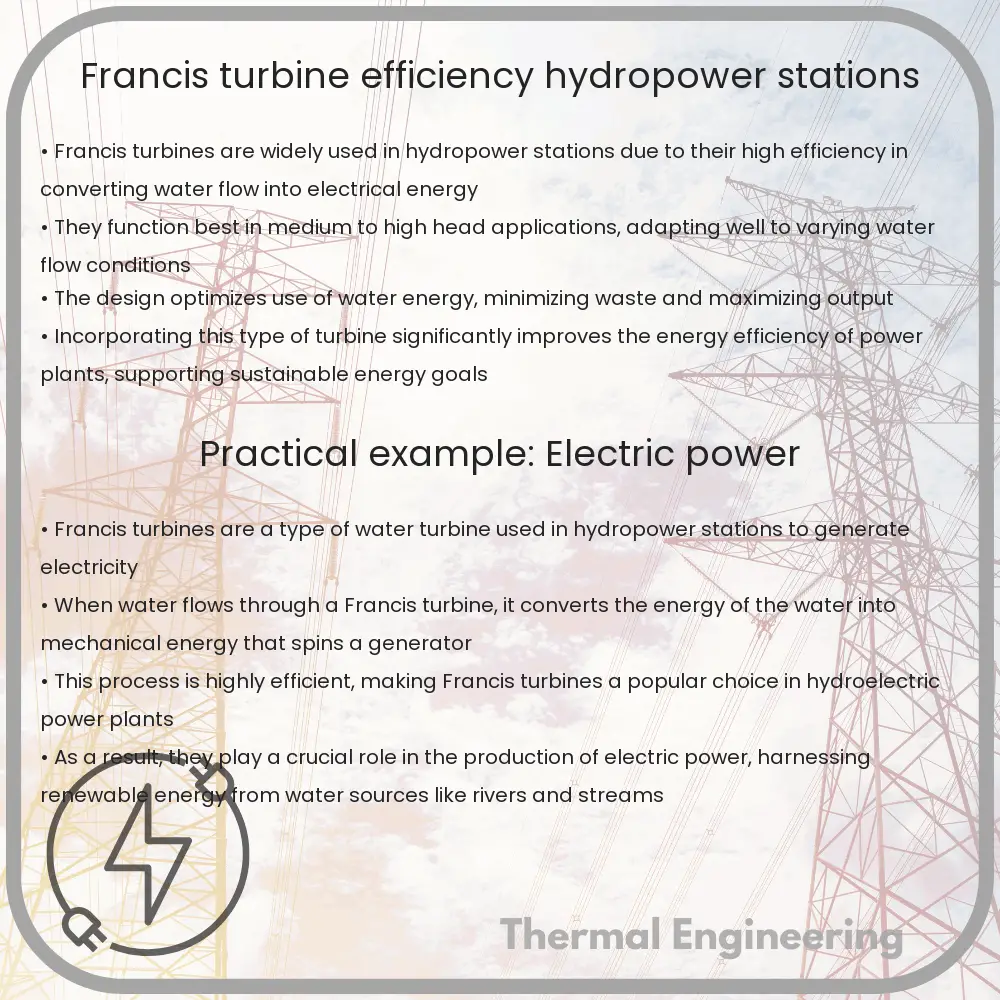Learn about the Francis turbine, its design, efficiency, and pivotal role in hydropower stations for sustainable energy generation.

Understanding the Francis Turbine: Efficiency and Application in Hydropower Stations
The Francis turbine is a type of water turbine that was developed by James B. Francis in the mid-19th century. It is an inward-flow reaction turbine that combines radial and axial flow concepts, making it one of the most efficient turbines used in hydropower stations. This article explores the design features, efficiency aspects, and applications of the Francis turbine in generating hydroelectric power.
Design and Working Principle of Francis Turbine
Francis turbines consist of the following main parts: the spiral casing, guide vanes, runner blades, and the draft tube. Water enters the turbine through the spiral casing, which surrounds the guide vanes. These vanes direct the water flow onto the runner blades, causing the runner to spin. The water’s kinetic energy at the entrance gets converted into mechanical energy as it spins the runner. After transferring its energy, the water exits through a draft tube where the cross-sectional area gradually increases, helping to recover pressure from the kinetic energy of the flowing water.
The design of the Francis turbine allows it to operate efficiently over a wide range of flow rates and water heads, making it versatile for different power generation requirements. The efficiency of these turbines can typically range from 90% to 95% under optimal operating conditions.
Efficiency of Francis Turbines
The efficiency of a Francis turbine largely depends on its design and the conditions under which it operates. Factors such as water head, flow rate, and turbine geometry play crucial roles. The equation for hydraulic efficiency of a turbine can be expressed as:
η = Pout / Pin
Here, Pout represents the output power generated by the turbine and Pin is the power available from the water flow. In practical terms, minimizing losses due to friction, turbulence, and other mechanical inefficiencies is key to enhancing the turbine’s efficiency.
- Friction Losses: Occur due to the resistance faced by water flowing through various components of the turbine.
- Turbulence: Caused by improper flow angles or roughness of the surface, leading to a loss of kinetic energy.
- Mechanical Losses: In the bearings and the generator, usually due to heat generation from moving parts.
Francis Turbines in Hydropower Stations
Francis turbines are widely used in hydropower installations worldwide. They are suitable for medium to high-head applications and can adapt to various operational requirements, such as load variation and water flow changes.
- They offer significant versatility and reliability for grid-connected power systems, allowing stations to adjust power output as per the demand.
- Their capability to operate in a reversible manner (as pump-turbines) in pumped-storage power plants makes them crucial for energy balancing, storing power during low demand and generating power during peak demand.
- Environmental impact is relatively controlled as modern designs emphasize fish-friendly turbines.
Conclusion
The Francis turbine continues to be a cornerstone in the field of renewable energy generation. Its design and efficiency make it ideal for a wide range of hydraulic heads and flow conditions, while advances in materials and technology have further enhanced its performance and application. Understanding these turbines’ engineering and operational mechanics provides insights into their critical role in sustainable energy solutions.
As the demand for sustainable and clean energy sources grows globally, Francis turbines play a pivotal role in meeting these needs through effective and efficient hydroelectric power generation.